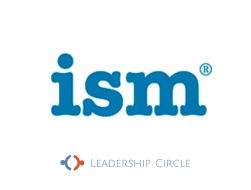|

In my work as a child psychologist and former school psychologist over the last 20 years, I’ve learned to become a flexible thinker. Because every student’s brain is different and relationships are dynamic, there really is no one way to engage all learners. Staying curious as an educator is especially necessary when teaching neurodivergent students.
While we are all neurodiverse as a population, some of us are neurodivergent, which includes those who have been diagnosed with ADHD or a learning disability as well as students who are autistic or twice-exceptional (gifted plus a learning difference). We know from research on inclusion that all students benefit from being educated together when possible. However, you may not always feel equipped to teach such a neurodiverse group of learners. I know it can sometimes feel like you need a background in special education or child psychology to teach neurodivergent students, but I don’t believe you do. You just need a few more tips and strategies. I’m here for you!
The first thing to understand about neurodivergent students is that their skills can develop asynchronously over time, which is often mismatched with curriculum that follows a linear path. It’s absolutely possible for a student to be a high reader and not be able to organize their belongings. Or, a student can be high-achieving in math and not be able to make inferences about a reading passage. These asynchronous skills can also trick us into thinking that students are less capable, or more capable in some instances, than they actually are.
Not surprisingly, most neurodivergent students experience a higher level of anxiety compared to their neurotypical peers. While many of these children are biologically more sensitive, they can additionally feel stressed by the mismatch of their skills and the academic demands in front of them. Imagine being able to read above grade level but struggling with math and the curriculum only teaches “down the middle”? When a student is taught below their abilities they may feel bored, but when academics feel too difficult students can become emotionally overwhelmed. You may notice these students not reaching their potential or feeling defeated by their performance. What can you do?
Start by shifting your mindset from “this student is giving me a hard time” to “this student is having a hard time.”If you have asked a student multiple times to do something and they haven’t done it, they may not have the executive functioning skills to do it independently…yet. Showing them what you mean or breaking it down for them may work. We have to get curious about what skills are lagging and how we can tweak the task to increase student motivation and engagement.
We know from neuroscience that our brains cannot access executive functioning skills when we are anxious. This is why we forget to do things when we are overwhelmed. If a student is stressed, it’s very likely that no effective learning will take place until they feel safe, connected, and engaged again. The next time you are met with an overwhelmed student, try a few of these strategies and see if you can reduce their anxiety so they can show you what they know!
-
Make it visual. If you find yourself thinking, “This kid is smart; they should be able to do this!” then you might have an executive functioning weakness on your hands. Our intelligence actually has little to do with our attention span. Visuals never get tired of repeating themselves so make a list for a student and direct them there the next time they ask, “What am I supposed to be doing?”
-
Reduce demands. It’s more rewarding for a student to feel successful with one task than to struggle to complete five tasks. The next time you find yourself baffled by a student’s difficulty to complete a task, think about why it’s hard for them, simplify the steps to get it done, then reduce support as they become more independent.
-
Incorporate interests. Our engagement increases when we are interested in what we’re doing. Traditional approaches ask students to work first then play, but many neurodivergent students need to incorporate play, or their interests, to increase their motivation and engagement to a task. Give it a try!
I can’t wait to share more ideas with you on February 9th at the Neurodiversity Conference at Hill Learning Center in Durham. Until then…
Let’s stay connected,
Dr. Emily W. King
www.learnwithdremily.com
|






















 .
. 
